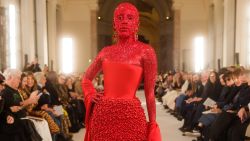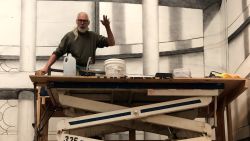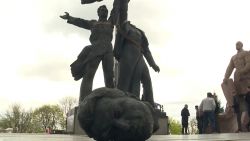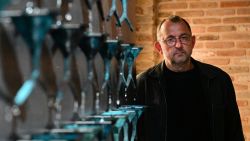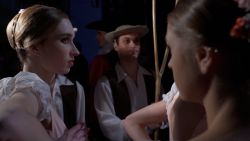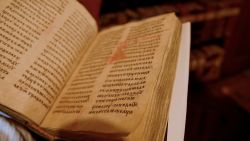Editor’s Note: This is an edited excerpt from a new retrospective book called JR: Can Art Change the World? published by Phaidon.
Let’s begin with an image. A French-Malian man in his mid-twenties stands in front of a crumbling concrete building adorned in graffiti, with several young children throwing hand gestures as well as staring curiously at the camera taking the photograph.
It’s a black-and-white photograph from 2004, shot in one of the banlieues – suburban French housing projects – called Les Bosquets. The man points what appears to be a gun at the camera, his eyes looking directly at us. This is the first read.
Looking more closely, we realize that the man – his name is Ladj Ly – points a video camera and not a gun. The eyes of the children and the man change as we realize that the expressions on those depicted in the image can be read differently. Everyone in the photograph seems to be aware of what is going on except us, the viewers, who have to take a second look. This is the second read.
Upon realizing that what appears to be a gun is, in fact, a camera, we become aware how we, as viewers, easily let images fall into our assumptions of what they provide. Due perhaps to the media or to clichés of visual culture, we might initially assume that the object in the hands of a black man is a gun. Not only are we guilty of making this assumption, but both Ly and the photographer seem to be calling us out by pointing the “gun” back at us. The image itself is, in fact, a weapon. This is the third read.
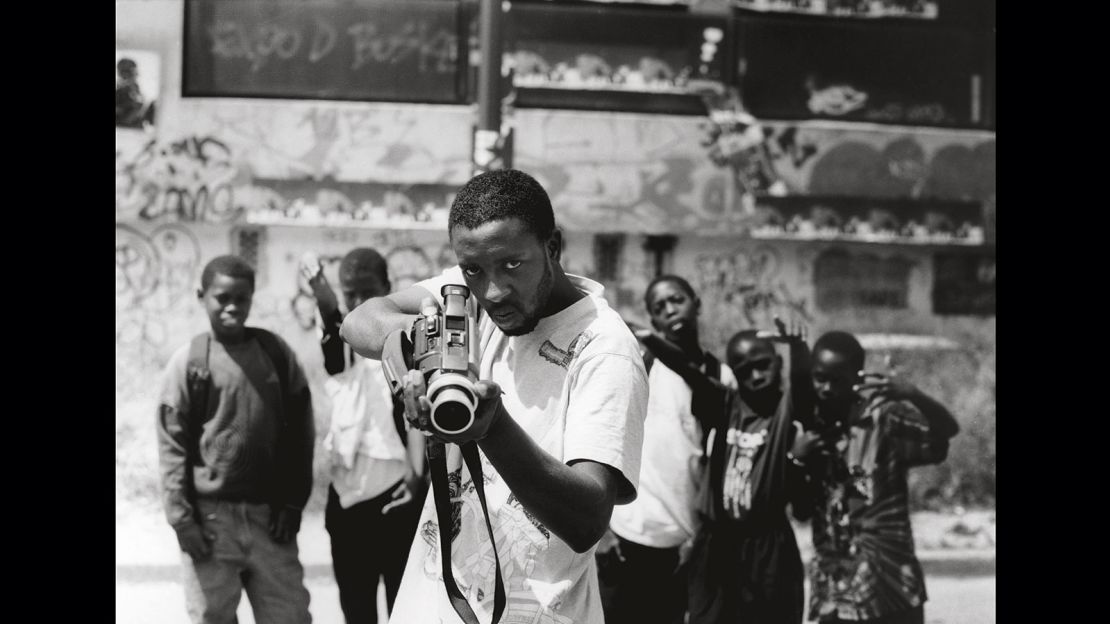
JR took this photograph as part of the project Portrait of a Generation, photographing the residents of Les Bosquets. At 21 years old, JR was already an experienced street artist – he had been doing graffiti since he was 13 – who had begun to use photocopies of his photographs as a street medium.
He included Portrait of a Generation and his other first projects in the series 28 Millimetres, the title of which is not only a reference to the lens he used in the photographs but also to the proximity between photographer and subject. These images presented carnivalesque, sympathetic, fun-house images of the locals, reminiscent of photographs taken in black-and-white photobooths – intimate and yet self-aware. Unlike the distanced and threatening portrayals in the media, these images were personal and extremely close up.
One year later, the Paris riots of 2005 broke out in these very suburbs. The trigger for the violence was the death of two teenage boys, Bouna Traoré and Zyed Benna, who were electrocuted while hiding from police in an electricity substation.
News of the teenagers’ deaths quickly spread among the mainly first and second-generation immigrant residents of Les Bosquets, releasing a collective sense of anger at institutional racism and its attending impoverishment that had been growing for the previous fifty years and sparking a historic uprising. The photographs JR had pasted throughout the neighborhood were suddenly broadcast on news reports as the backdrop to the riots.
Can art change the world?
JR has stated presciently, “Images are not special. It is what you do with them.” This insight holds true not only for his practice but also for those who participated in the riot. “The media had to stop reporting how many cars were being torched because it quickly became a competition between different suburbs. Television played an important role. People I know would participate in the riots so they could go home later that day and see themselves on the news and say, ‘That is me!’”
That is me. The words carry a primary sense of existence that translates into mediums of representation, be they television or, in the case of JR’s work, a hybrid format of photography with the street as its gallery. Andy Warhol notoriously quipped that in the future every person would be famous for fifteen minutes, but in the case of the world’s most disenfranchised, not only is it rare to have their fifteen minutes of fame, but when they do, they are often reduced to clichés, to mediated stereotypes, to abstractions of the individual, intimate person.
The news images of the riots reduced the rioters to something they felt they were not. What JR provides is a self-aware lens that demonstrates the mediated nature of everyone. We are all both famous and alienated, the viewer and the subject alike.
The above text is an excerpt from a new retrospective book called JR: Can Art Change the World? published by Phaidon.


